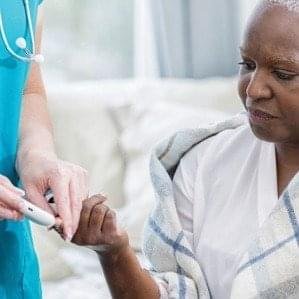The prevalence of diabetes in the United States has reached alarming levels, with nearly one in six adults now living with the condition. According to recent data from the Centers for Disease Control and Prevention (CDC), the proportion of American adults with diabetes has surged from 9.7% in 1999-2000 to a staggering 15.8% between 2021 and 2023.
This dramatic increase in diabetes rates is not affecting all communities equally. Black adults are disproportionately impacted, with a 60% higher likelihood of being diagnosed with diabetes compared to their white counterparts, as reported by the Department of Health and Human Services in 2018. A study published earlier this year revealed an even more troubling trend: the rate of type 2 diabetes among Black Americans rose by almost 20% between 2012 and 2022, outpacing other racial groups.
The Latino community is also facing a significant diabetes burden. Young Latinos are particularly vulnerable, with over 22% of Latino youth and 28.7% of Latino young adults having prediabetes. These rates are notably higher than those observed in non-Latino white youth and young adults.
Adding to the concern is the fact that approximately one-quarter of individuals with diabetes are unaware they have the condition. This lack of awareness can lead to delayed treatment and increased risk of complications.
Health experts emphasize the importance of lifestyle changes in reducing diabetes risk and managing the condition. Recommendations include increasing physical activity, adopting a healthy diet, and, for those with overweight or obesity, losing weight.
As diabetes continues to pose a significant public health challenge, addressing the disparities in its impact on minority communities remains a critical priority for healthcare providers and policymakers alike.
See “Diabetes Rate Has Increased From 9.7% to 15.8% Since 2000” (November 12, 2024)



